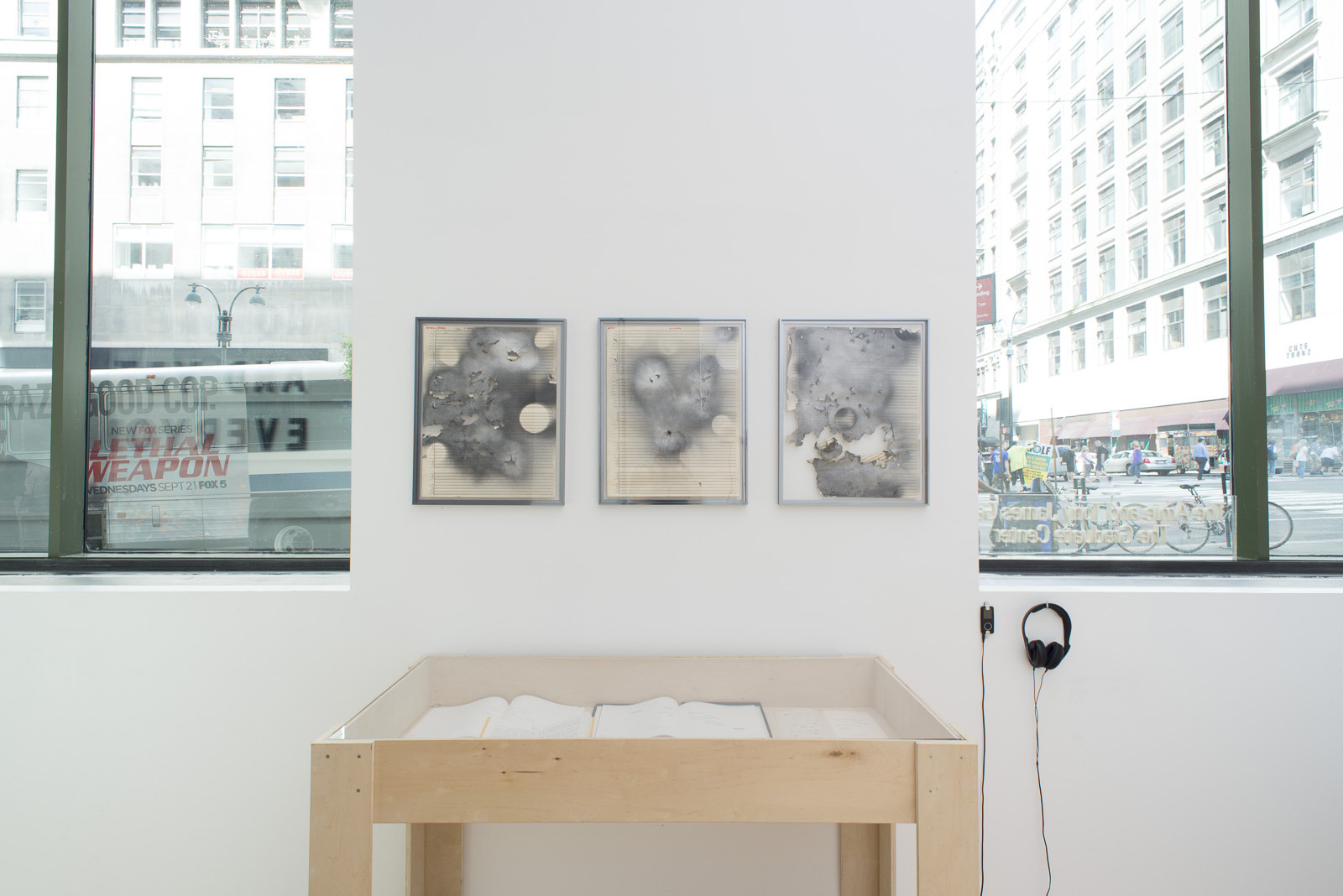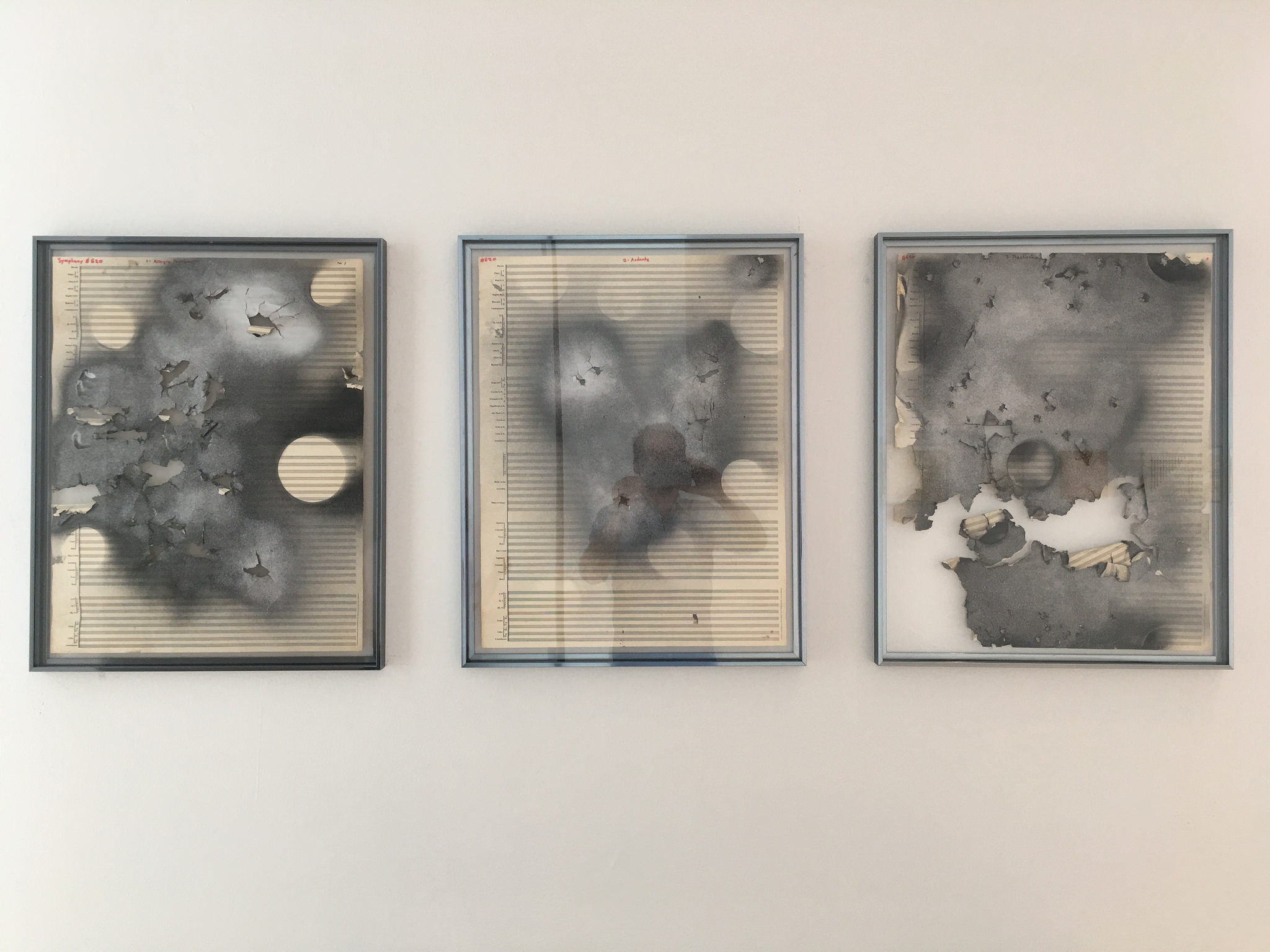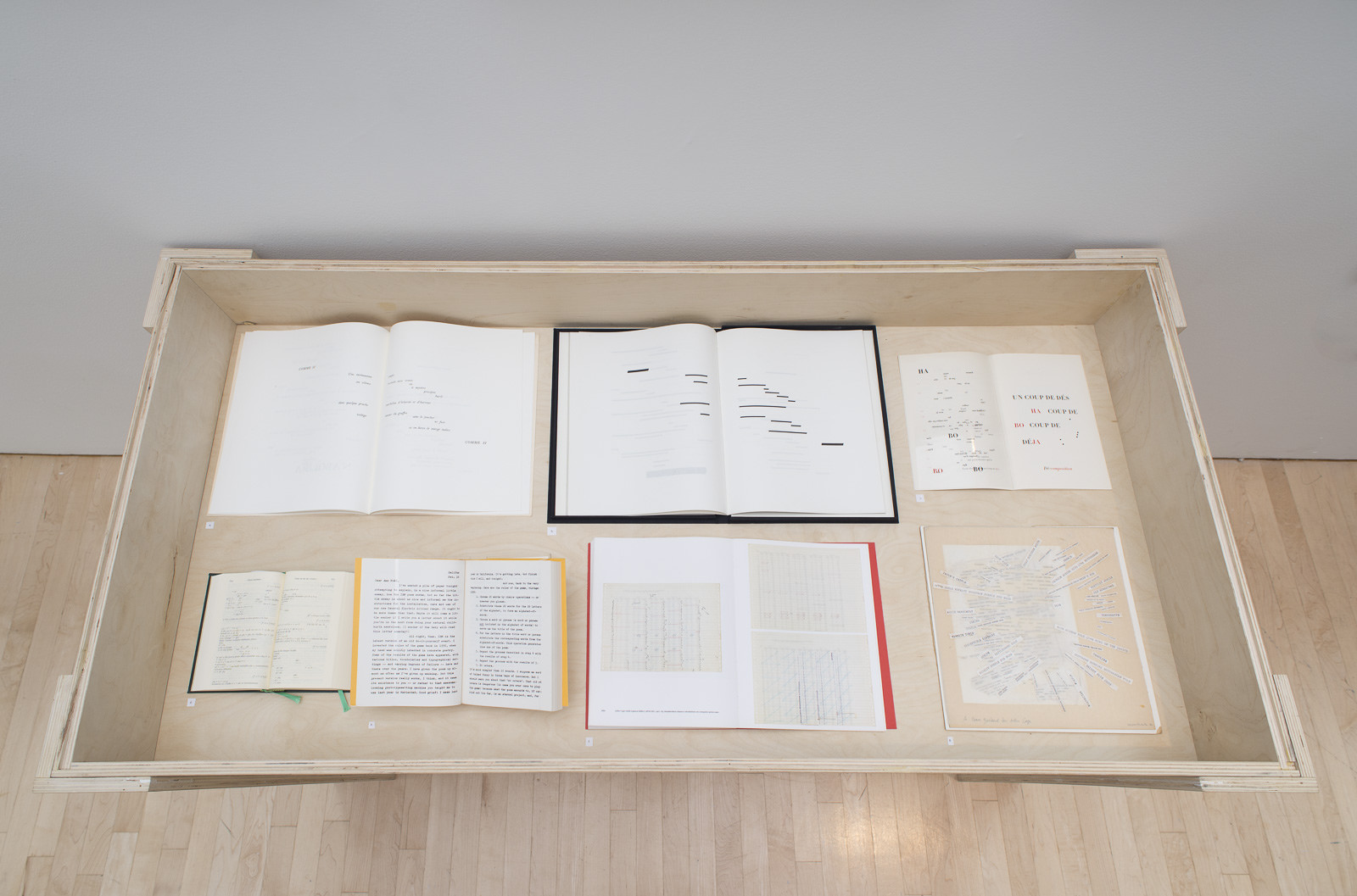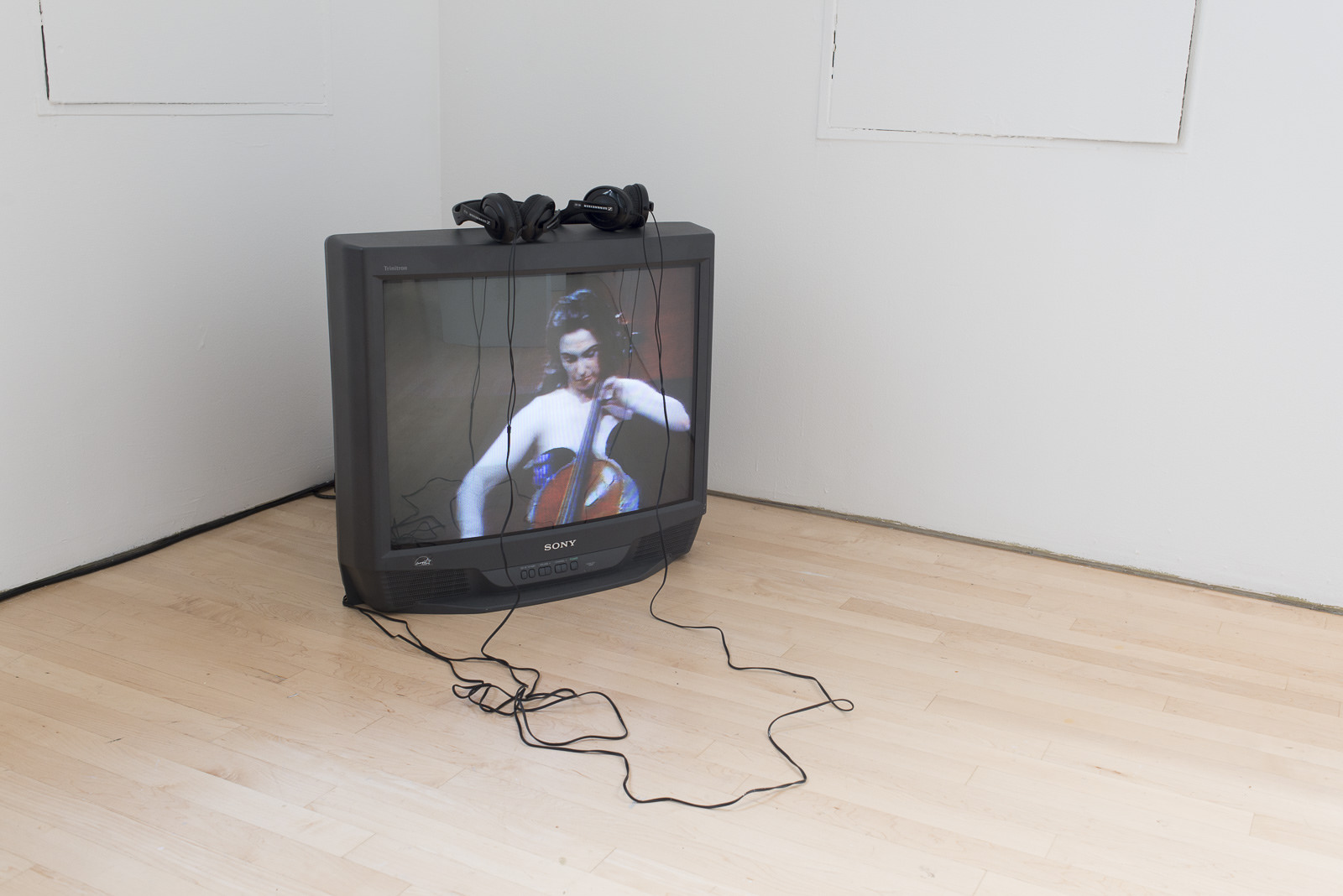The House of Dust by Alison Knowles
INHABITED BY PEOPLE WHO LOVE TO READ
Historical works informed by chance actions and permutation
-*Dick Higgins, mixed media works, n.d.: 1000 Symphonies – Symphony #620, Symphony #75 (Irish symphony #2), Symphony #20 – In Honorem Auroram.*
-John Cage and Lejaren Hiller, HPSCHD, 1969
Exhibition recording by Joel Chadabe and William Blakeney for Electronic Music Foundation, Albany, New York
HPSCHD was composed of seven solos for harpsichord along with over fifty computerized tapes, which were randomly generated by a computer code written in FORTRAN that selected classical works by composters such as Beethoven and Chopin. For its premiere, Cage and Lejaren Hiller orchestrated an immersive multimedia experience involving performances by Philip Corner, David Tudor, and others; it has been subsequently performed over the years.
-*Nam June Paik, Tribute to John Cage (excerpt), 1973*
This excerpt showed film documentation of John Cage’s Chance And Random composition in three parts.
-A vitrine that explored the relationship between The House of Dust, scores and concrete poetry informed by chance actions and permutation. Pioneering computer-generated works, such as Theo Lutz’s Stochastic Texts and The IBM poem by Emmett Williams, further developed these themes.
*Stéphane Mallarmé, Un Coup de Dés Jamais n’Abolira Le Hasard (A Throw of the Dice Will Never Abolish Chance), 1897*
Mallarmé’s spatialized poetry, which employed various typographic compositions, was highly influential for the development of 20th century art and literature.Marcel Broodthaers, Un Coup de Dés, 1969
Mallarmé’s facsimile was the subject of very precise erasures of the text that revealed the materiality and composition of words.
- Jérémie Bennequin, Le Hasard n’abolira jamais un Coup de Dés, Omage, 2014
This work refers to Mallarmé’s publication and its 1969 reiterpretation proposed by Broodthaers. By rolling a dice during several public sessions, Bennequin randomly organized the digital erasure of each syllable of the poem printed on translucent page. Created for the K.O.S.H.K.O.N.O.N.G review edited by Jean Dave, this version enabled the readers to interact with the poem for themselves.
- *Stéphane Mallarmé, Le Livre (The Book), n.d*
The Book was an unfinished project Mallarmé developed over several decades that was comprised of pages that did not succeed one another, but rather were arranged according to a permutational system. Each of these parts, left unconnected to one another, was to remain loose in order to allow every possible combination. Mallarmé also imagined a specific display of this work in which visitors could interact with the text.
- Emmett Williams, “The IBM Poem,” in A Valentine for Noël, four variations on a scheme. Something Else Press, 1973
- John Cage and Lejaren Hiller, Score for “HPSCHD”, in The Anarchy of Silence: John Cage and Experimental Art, Museu Dart Contemporani de Barcelona, 2010
- Alison Knowles, A Bean Garland for John Cage, n.d.
The names of individual beans are arranged spectrally on different layers of transparent paper.



